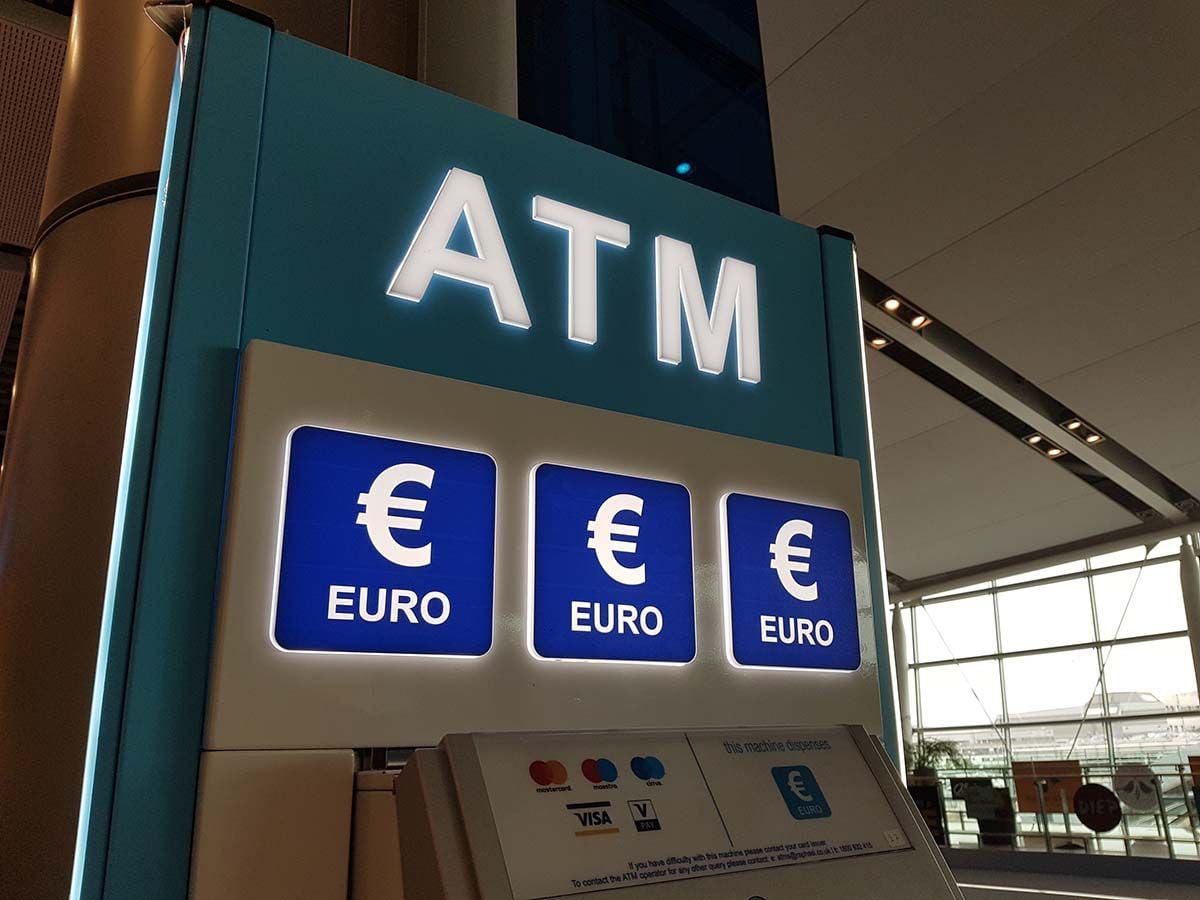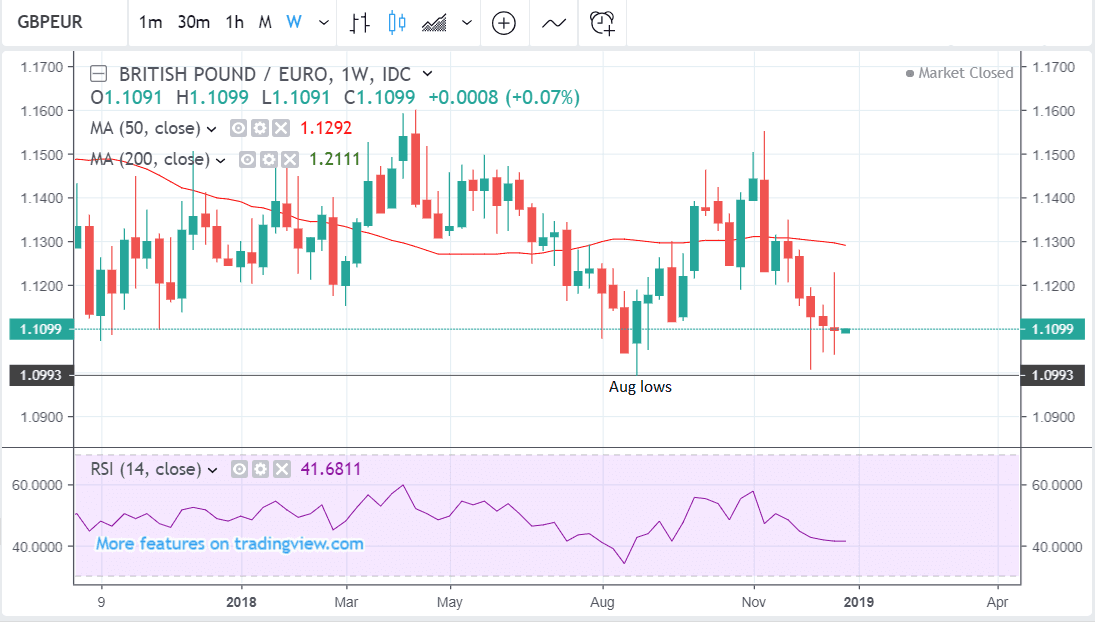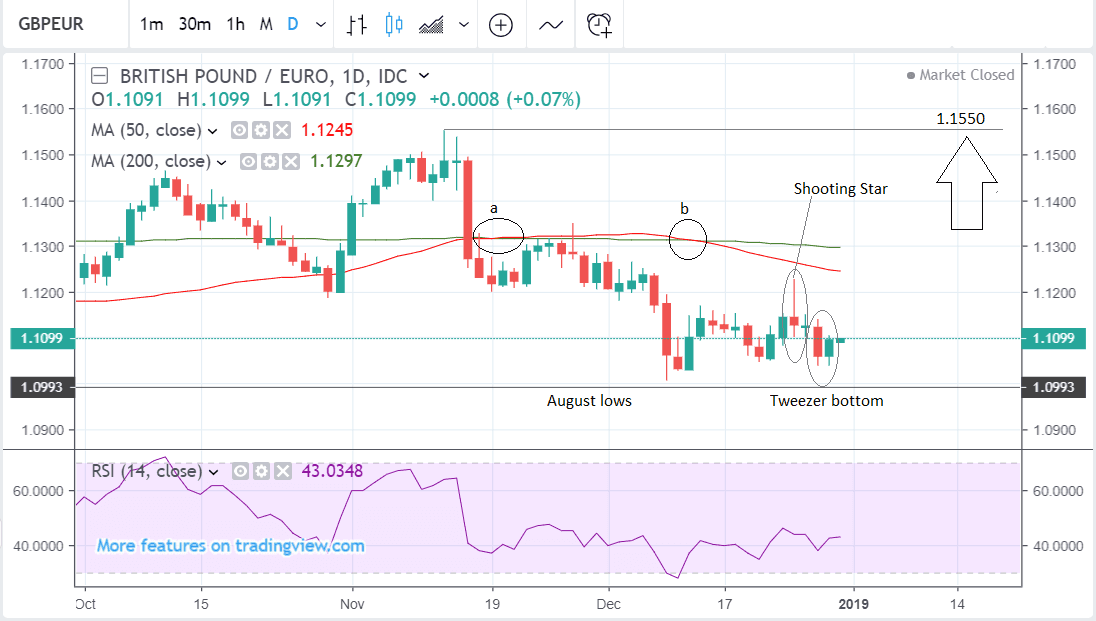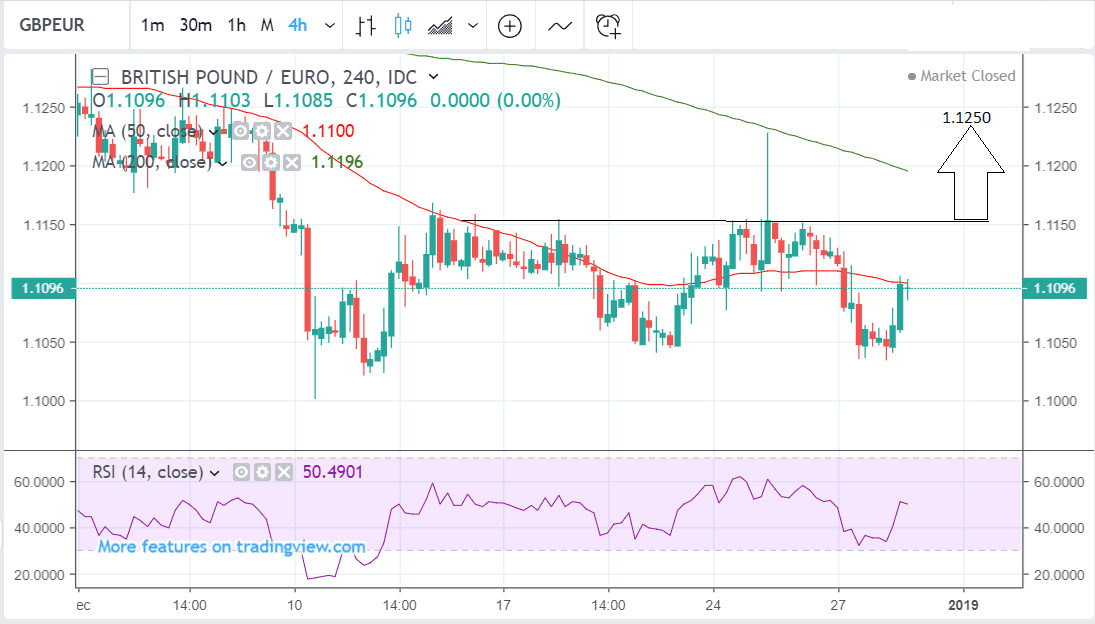The Pound-to-Euro X-Rate Starts New Week Stronger, Technical Studies Suggest Mild Upside Bias Possible this Week

Image (C) Pound Sterling Live.
- GBP/EUR at the floor of a long-term range
- Likelihood of a bounce higher has increased
- Main release for the Pound this week are PMI data; for the Euro CPI
Pound Sterling starts the new week on the front foot with a 0.45% advance being recorded against the Euro that sees the GBP/EUR exchange rate quoted at 1.1134 at the time of writing, there is nothing specific on the newswires to justify the gain but month-end rebalancing is being widely cited as the driver behind the outperformance of the British currency.
According to a flash note from Robert Howard, an analyst with Thomson Reuters, "short-covering helps inflate" Sterling at month-end and year-end. 'Short covering' is the closing of existing bets against Sterling, a process that often takes place at month-end when portfolio managers look to rebalance the currency exposure of their investments.
The overall techncail outlook for GBP/EUR is for it to continue sideways with a very marginal bullish bias. The pair is now trading towards the bottom of a range between roughly 1.10 (August lows) and 1.16 and there is a chance, therefore, that it could bounce back up towards the range highs.
The narrowing open-close range of the last few weeks’ candlesticks also supports this view by suggesting waning downside momentum and therefore the possibility of a reversal higher.
More upside also looks more ‘right’ to the trained eye, and this provides some supporting evidence.
The daily chart (above) is more ambiguous. It shows the pair bumping along the bottom of the 1.10 and 1.16 range in more detail, and that it has formed a maller mini-range within the larger range. The mini-range encompases the space between 1.10 and 1.1250 and started forming after the pair bottomed at the December 10 lows.
It’s not clear which way the exchange rate will break out of this mini-range. There is supporting evidence for both a bullish and bearish view. The bearish ‘shooting star’ which formed on December 25 was very bearish whilst the bullish ‘tweezer bottom’ which formed on December 27-28 is bullish.
The 50 and 200 moving averages (MA) are also giving mixed signals: note how first of all in November the 50 crossed above the 200 giving a bullish signal (a) before crossing back below in December and giving a bearish signal (9).
The RSI momentum study in the lower pane is bullish, if anything, as it shows momentum overall recovering after it formed a V-shaped bottom on December 11. It somehow looks more ‘right’ for it to rise from here rather than fall, which supports a bullish view for the underlying price.
Although the daily chart is giving mixed signals, the fact that the pair is at the longer-term multi-month broader range lows suggests an overall bias to more upside and a ‘bounce’ higher evolving, and this informs our marginally bullish view.
Initially, there is a chance of a move up to 1.1250. The four-hour chart above shows this scenario in more detail. A break above the 1.1150 highs would probably provide sufficient confirmation - at least initially - for a 100 point move up to the 1.1250 ‘first base’ initial target.
The 50 and 200 moving averages (MAs) in the mid 1.12s are likely to present an obstruction to further gains, and a clear break above would be required to provide strong confirmation of a continuation higher.
Such a break would receive a green-light from a move above 1.1350 to an initial target at 1.1550, at the November highs, close to the range highs.
At the time of writing the inter-bank GBP/EUR exchange rate is at 1.1134, high-street banks are offering an exchange rate of between 1.0850 and 1.0930, independent specialists are offering tighter spreads with rates between 1.1040 and 1.1080.
The Pound What to Watch this Week

The main release for Sterling in the week ahead is probably key sector PMI data for December.
The first sector data scheduled for release is Manufacturing PMI out at 9.30 GMT, on Wednesday, January 2. This is forecast to show a slowdown in manufacturing activity to 52.5 from 53.1. A greater-than-expected slowdown would be bad for the Pound.
Next comes Construction PMI on Thursday at the same time. This is forecast to show a slight fall to 52.9 from 53.4 in December.
Finally, Services PMI is out on Friday at 9.30 and is forecast to show a rise to 50.7 from 50.4. Services is the largest sector in the UK and, thus, is probably the most important of the three. Just like in the case of Manufacturing, a greater-than-expected slowdown would be detrimental for the Pound.
The rest of the data from the UK is unlikely to move the Pound much. Nationwide house prices are out at 7.00 on Friday when they are expected to show a 0.1% rise in December from the previous month.
Consumer credit and mortgage lending data is also out on Friday at 9.30. Consumer Credit is expected to show a rise to £0.95bn in November from £0.9bn in October. Mortgage lending is forecast to fall from £4.1bn to £4.0bn, month-on-month in November.
Brexit headlines are also likely to drive Sterling in the week ahead, although given Parliament is in recess their importance may be more circumstantial than key.
Those looking to lock in a good GBP/EUR exchange rate ahead of a potentially volatile month and year should do so over coming days as we expect volatility to be relatively low ahead of the key Brexit vote mid-month. If you lock in an exchange rate for a major international payment you can set aside any concerns on what this volatility might deliver, find out more here.
The Euro: What to Watch

The main release for the Euro in the week ahead is Eurozone inflation data for December, which is out at 10.00 GMT on Friday, January 4.
Broad, headline inflation is forecast to show a slight decline from 1.9% to 1.8% in line with falling oil prices, however, the arguably more important core gauge is forecast to remain unchanged at 1.0%.
Inflation is significant for the Euro as it is an indicator of underlying growth, and informs European Central Bank (ECB) monetary policy. Higher inflation leads the ECB to tighten policy which is positive for the Euro; weaker inflation has the opposite effect.
Tighter policy: less stimulus and higher interest rates, or the expectation of tighter policy, tends to benefit currencies as it leads to greater net inflows of foreign capital, as countries with higher interest rates and thriving growth profiles tend to attract and preserve greater quantities of foreign capital.







